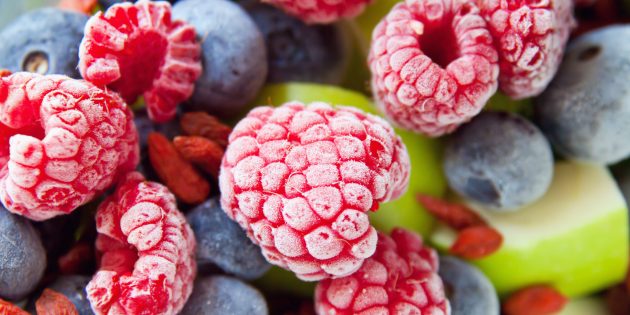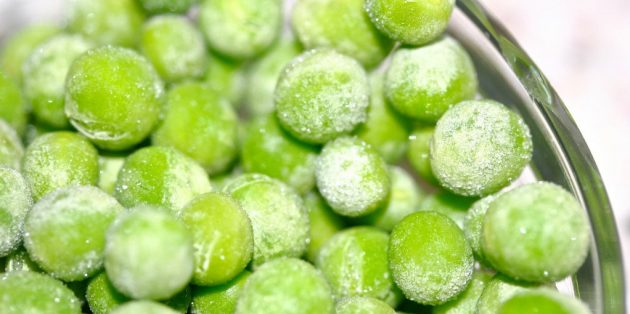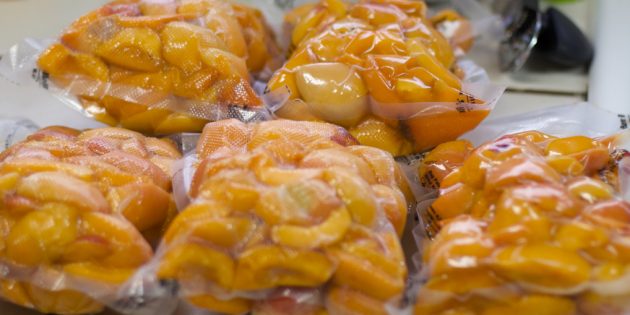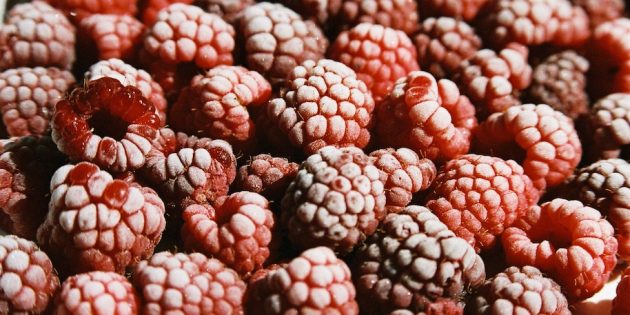This is the time to stock up on vitamins in summer while fruits and vegetables are tasty and cheap. Read on to find out.
General rules

1. Freeze only fresh vegetables, fruits, and berries. They should not be too soft or with damage.
2. Before freezing thoroughly wash and dry them. If it's bad to dry, everything will stick together in an ice com in the freezer.
3. Freeze vegetables and fruits as you use them. Many products become softer fresh after defrosting. So first brush and grind everything you need, and then send it to the freezer.
4. Use plastic containers or special bags to freeze. Be sure to sign containers not to rack your brains, trying to remember what is orange inside and how long it lies here.
5. Freeze in small portions. So you do not have to suffer, chipping away from a frozen piece of the right amount of product. Spread the vegetables in bags, flatten each bag to get out the air, and then the blunt side of the knife divide the contents into slices. They will be easy to break off without defrosting everything at once. Fruit, vegetable, and berry puree can be poured over silicone ice molds.
Read also: Practical Guide on How to Preserve Fruits
6. Set the thermostat to -18°C. In such conditions, vegetables and fruits can be stored for up to 12 months. It is better not to fill the freezer all at once and add their new products in small portions. It is good to allocate separate compartments for vegetables, greens, and fruits: frozen foods perfectly absorb foreign smells.
7. Freeze seasonal foods. For example, aubergines and tomatoes in winter and spring are sold at a triple price, and taste resembles Styrofoam. But potatoes and cabbage to send in the freezer do not make sense: they are all year round, so save space.
How to freeze vegetables

First, let's talk about vegetables that do not need to freeze - cucumbers, radishes, and green salad. After thawing, they will turn into a slurry, which is difficult to find any use.
Tomatoes also lose shape, but for cooking, it does not really matter. For soups, stews and sauces, freeze the tomatoes in cubes, and for casseroles and pizzas - in circles. You can grind tomatoes with herbs in a blender and freeze the mixture in silicone forms.
Courgettes and eggplants are better to freeze ready-made: cut them into mugs or cubes and generously give boiling water or fry in vegetable oil. Then divide into portions and freeze each in a separate container.
To make the cauliflower and broccoli in a defrosted form not be hard, divide them into inflorescences, thoroughly rinse, and for a couple of minutes in boiling water. Blanch is a green bean and green peas - it should be removed from the pod. Boil the corn and remove the grains from the cob with a knife.
Bulgarian pepper can be frozen in whole and whole. If you make a circular incision around the leg and gently remove the seeds, you will get a blank for a stuffed pepper. Make several of these blanks, dry and paste one into another - it will save space. Put the "matryoshka" of peppers in a bag and send it to the freezer.
Carrots before freezing should be thoroughly washed, cleaned, and cut or grated on a grate. The beetroot is boiled and grated on a large grate. You'll get a ready base for a salad.
From vegetables, you can make a ready-made mixture for soups and stews in different variants.
- tomatoes, bell peppers, zucchini
- cauliflower, carrots, green peas, green beans
- corn, green peas, and bell pepper
- eggplant, tomatoes, bell pepper
- broccoli, bell pepper, corn, green beans
How to freeze fruits

Choose relatively dense and unripe fruits so that when defrosted, they do not turn into a mash. If the fruit has already become quite soft, freeze them in the form of puree - it can be served with pancakes and pancakes or used as a filling for pies.
Peel the bananas, cut into 3 to 4 pieces (depending on the fruit's size), dry with a paper towel, and store in a solid container. Do not believe those who advise against freezing them in the peel. Or try to peel the snug coming for the sake of interest.
Cut the apples and pears into pieces and sprinkle them with lemon juice to not darken. Divide apricots and peaches into halves, remove the bones, and fold them into a plastic container.
Oranges should not be frozen: after defrosting, they bitter. But you can put it in the freezer containers with juice or sachets of sister.
How to freeze berries

After defrosting, the berries will be softened; they will be inconvenient to process. Therefore, before freezing, remove the stems from strawberries and gooseberry, remove the seeds from the plums, cherries, and cherries,and separate the grapes and currants from the bunches. Soak the raspberries in the water to make random worms surface. You can not divide the berries into small portions: if they are well dried, they will not stick together.
Also read: 10 Fruits that Should Not be Kept in the Fridge
Strawberries, strawberries, raspberries, and blackberries are best frozen in containers to keep the shape. Cherries, plums, blackcurrants, cranberries, blueberries, and gooseberries can be stored in packets.
For desserts come in handy mashed potatoes, such as strawberries, raspberries, blackcurrants, or cherries. Grind the berries in a blender and freeze in small portions in plastic containers.
Adapted and translated by The Cop Cart Staff
Sources: Life hacker







